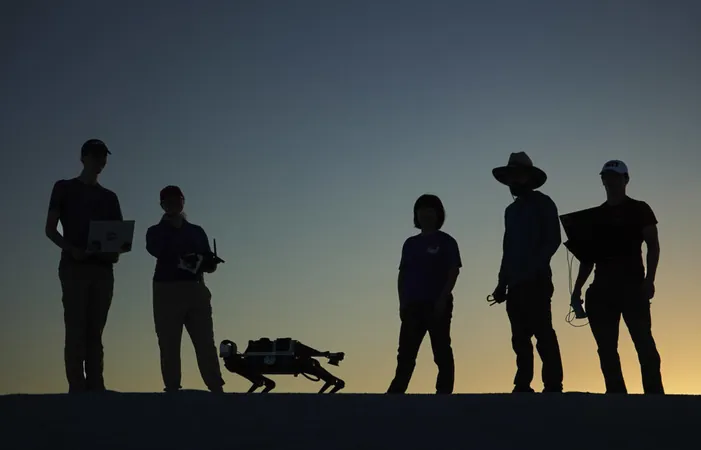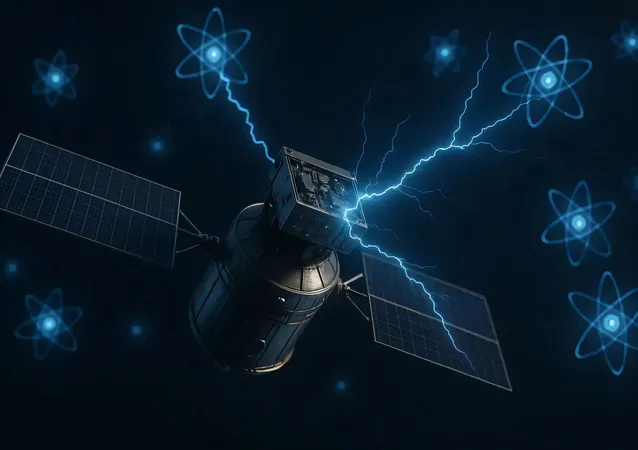
Robots on the Brink of Mars: Groundbreaking Advances from New Mexico's Sands
2025-09-02
Author: Daniel
Pioneering Robotic Research at White Sands National Park
In a thrilling step towards sending robotic companions to Mars, researchers have been conducting intense field tests with a dog-like robot in the breathtaking environment of White Sands National Park, New Mexico. Over the past five days, this remarkable initiative aims to prepare robotic explorers for their future missions on the Martian surface.
Mars Missions: The Future of Quadrupedal Robots
This project, part of NASA's ambitious Moon to Mars program, seeks to harness the unique strengths of quadrupedal robots—essentially robotic dogs—to gather scientific data where human astronauts may tread. Cristina Wilson, a leading researcher from Oregon State University, emphasized the pressing need for these robots in extraterrestrial explorations. "Our group is very committed to putting quadrupeds on the Moon and Mars. It's the next frontier," she stated.
From Earth to Other Worlds: A Multidisciplinary Team Effort
Dubbed the LASSIE Project (Legged Autonomous Surface Science in Analog Environments), this initiative involves a kaleidoscope of expertise, including engineers, geoscientists, cognitive scientists, and planetary scientists from esteemed institutions like USC, Texas A&M, and NASA. This diverse team is driven by the goal of perfecting the algorithms and technologies that will enable precise movement and autonomous decision-making in these quadrupedal robots.
Trials in Extreme Conditions: The White Sands Experience
The recent fieldwork faced extreme challenges, with temperatures soaring into the triple digits, prompting the team to start their activities at dawn. Despite the harsh conditions, significant advancements were made; for the first time, the robot was able to function autonomously, showcasing its ability to make real-time decisions—a game changer for future missions where robots will need to operate alongside human astronauts.
Innovations in Motion: Tailoring Robot Movement
The researchers also tested breakthrough strategies for adapting the robot's movements based on varying surface conditions. This capability is crucial for optimizing energy use, a vital aspect for longevity during Mars missions. Wilson noted, "There is certainly a lot more research to do, but these are important steps in realizing the goal of sending quadrupeds to the Moon and Mars."
The Innovative Future of Space Exploration Awaits
With each field test, the promise of robotic exploration on Mars grows closer. Collaborating with leaders from multiple universities and NASA, this dedicated team is not only laying the groundwork for robotic aides but is also pushing the boundaries of what’s possible in the realm of cosmic discovery.





 Brasil (PT)
Brasil (PT)
 Canada (EN)
Canada (EN)
 Chile (ES)
Chile (ES)
 Česko (CS)
Česko (CS)
 대한민국 (KO)
대한민국 (KO)
 España (ES)
España (ES)
 France (FR)
France (FR)
 Hong Kong (EN)
Hong Kong (EN)
 Italia (IT)
Italia (IT)
 日本 (JA)
日本 (JA)
 Magyarország (HU)
Magyarország (HU)
 Norge (NO)
Norge (NO)
 Polska (PL)
Polska (PL)
 Schweiz (DE)
Schweiz (DE)
 Singapore (EN)
Singapore (EN)
 Sverige (SV)
Sverige (SV)
 Suomi (FI)
Suomi (FI)
 Türkiye (TR)
Türkiye (TR)
 الإمارات العربية المتحدة (AR)
الإمارات العربية المتحدة (AR)